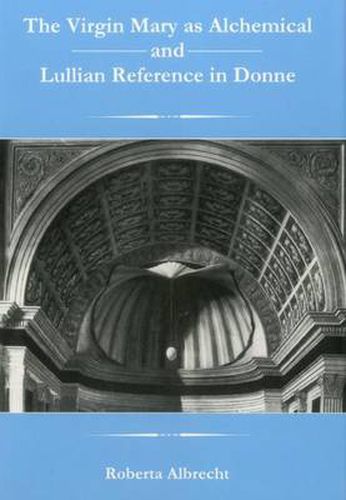Readings Newsletter
Become a Readings Member to make your shopping experience even easier.
Sign in or sign up for free!
You’re not far away from qualifying for FREE standard shipping within Australia
You’ve qualified for FREE standard shipping within Australia
The cart is loading…






This groundbreaking study demonstrates the profound influence of Ramon Lull (c. 1232-1316?) upon Donne. Albrecht traces Donne’s ecumenical vision back to Lull, back to Pico della Mirandola, Lull’s disciple, and back to the Jewish cabala, sources for both. She shows how Donne refashioned Lull’s abstract version of Mary and, like Lull, used this Mary to include Muslims and Jews in the church universal. She shows how pseudo-Lullian alchemical theories allowed him to describe, with impunity, Mary’s function in theologial alchemy, a works-oriented theology that included the female principle in the Tetragrammaton - that name that cannot be spoken. Finally, she shows how Donne incorporated the corporeal images of medieval iconography into Lull’s mnemotechnics in order to construct texts whereby God’s attributes, perceived as a series of ever-changing combinations, reveal an ecumenical frame of mind far more advanced than hitherto supposed. This study will appeal to new historicists and those interested in alchemy, emblems, or theology. Roberta J. Albrecht is an independent scholar.
$9.00 standard shipping within Australia
FREE standard shipping within Australia for orders over $100.00
Express & International shipping calculated at checkout
This groundbreaking study demonstrates the profound influence of Ramon Lull (c. 1232-1316?) upon Donne. Albrecht traces Donne’s ecumenical vision back to Lull, back to Pico della Mirandola, Lull’s disciple, and back to the Jewish cabala, sources for both. She shows how Donne refashioned Lull’s abstract version of Mary and, like Lull, used this Mary to include Muslims and Jews in the church universal. She shows how pseudo-Lullian alchemical theories allowed him to describe, with impunity, Mary’s function in theologial alchemy, a works-oriented theology that included the female principle in the Tetragrammaton - that name that cannot be spoken. Finally, she shows how Donne incorporated the corporeal images of medieval iconography into Lull’s mnemotechnics in order to construct texts whereby God’s attributes, perceived as a series of ever-changing combinations, reveal an ecumenical frame of mind far more advanced than hitherto supposed. This study will appeal to new historicists and those interested in alchemy, emblems, or theology. Roberta J. Albrecht is an independent scholar.